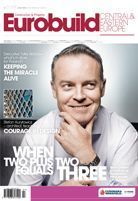The list of his achievements is long indeed. It starts and finishes in Warsaw - the city where he was born and remained committed to until the end. Stefan Kuryłowicz, one of poland's most remarkable modern architects, tragically died on June 6th in a flying accident in Spain
Mladen Petrov
In the beginning there was a sausage kiosk at Dworzec Gdański railway station in Warsaw. This was his first design. From time-to-time he liked going back there and looking at it. The kiosk survived 30 years and became part of the scenery as time went by. Professor Stefan Kuryłowicz's later projects, such as the Focus office building, the Dworzec Gdański underground station, Centrum Królewska and the Nautilus office building on Nowogrodzka have also become integral to the landscape of Warsaw.He has now died at the age of 62 and sadly did not live to see the completion of other projects that are likely to become every bit as iconic: the Plac Unii building, which is being constructed on the site o






























































